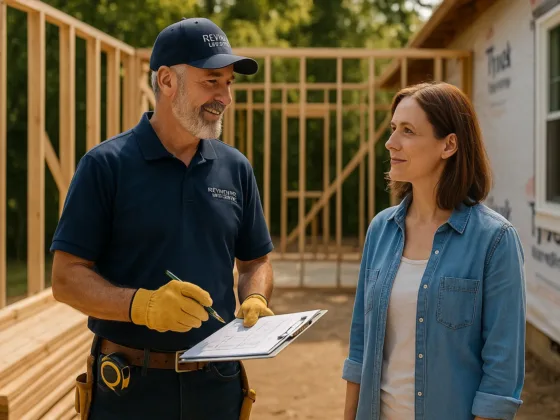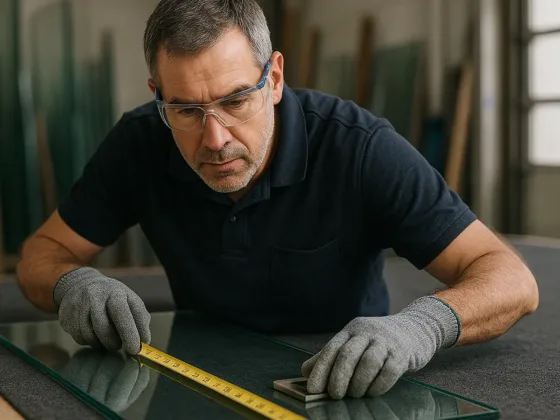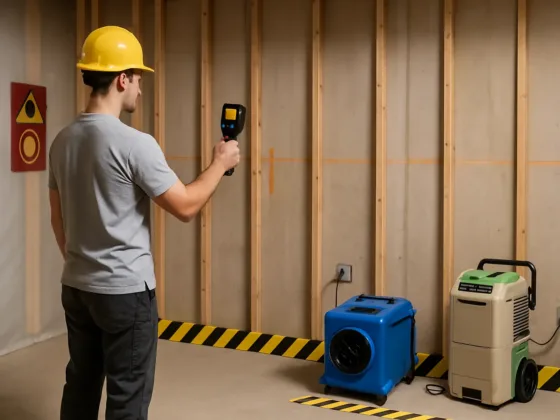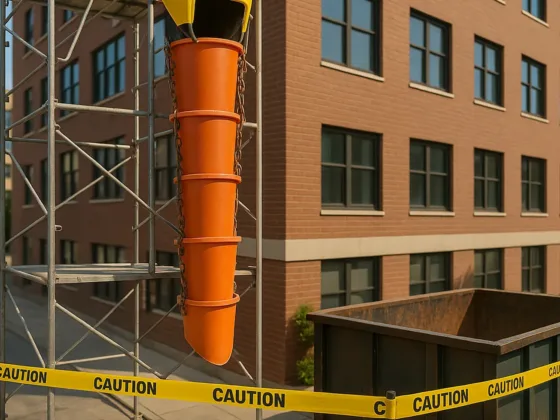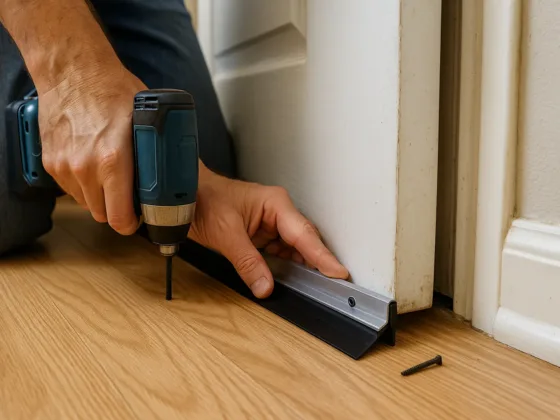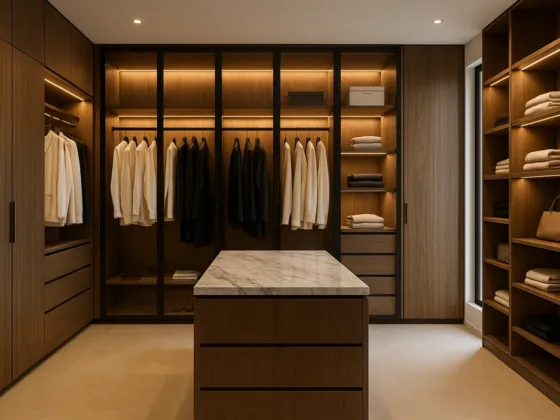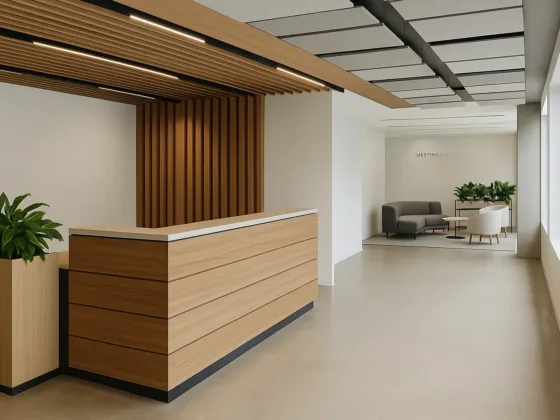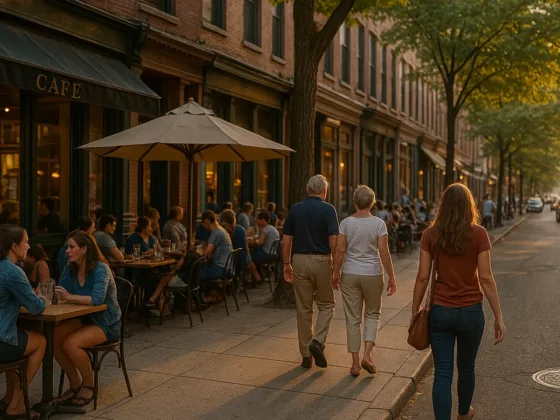Table of Contents Show
Walk into any open house and notice where people gather. Nine times out of ten, it’s the kitchen. Buyers run their hands along the benchtops, open cupboards, peek into the pantry, and glance up at the lights. Real estate agents know it, homeowners know it too: the kitchen sells the house.
That’s why renovating the kitchen is rarely wasted money. In fact, depending on how you go about it, you can recoup 70–80% of your spend when you sell, according to property analysts. But numbers aside, there’s also the lifestyle upgrade. A well-thought-out kitchen can shave minutes off your daily routine, make entertaining smoother, and stop those “who designed this?” frustrations that old kitchens so often create.
This guide takes you through the kitchen renovation trends of 2025 that aren’t just fashionable for a moment—they’re practical, marketable, and grounded in how Australians actually use their kitchens.
Why Buyers Obsess Over Kitchens
Think about the last time you inspected a property. Did you imagine yourself sitting in the living room… or standing in the kitchen, wondering if your favourite cast iron pan would fit on the stove? Most people do the latter.
“Kitchens are where decisions are made,” says Lisa Tran, a Melbourne-based buyers’ advocate. “If a kitchen feels too small or too dated, clients often walk away. If it feels light, functional, and inviting, they’ll forgive other flaws in the house.”
That’s why, when planning a renovation, it’s smart to strike a balance: create a kitchen you’ll love to live in now, while making choices that will still appeal to buyers later.
Trend 1: Neutral Bases, Gentle Colour Pops
White kitchens still rule the roost, but in 2025, sterile white boxes are out. The trick now is soft neutrals with personality.
- Base Palette: Think warm whites, creams, and pale greys. These form a safe foundation that won’t date quickly.
- Colour Pops: Sage green on an island, dusty blue cabinets, or even muted clay tones. These are “buyer-friendly” colours: interesting, but not polarising.
Take Sarah and Tim, homeowners in Sydney’s inner west. Their 1980s kitchen was all brown laminate. They repainted the uppers white, the lowers a eucalyptus green, and added brushed brass handles. The cost? Just under $7,000. The impact? Their home sold in eight days, well above the suburb average.
Trend 2: Stone Meets Timber
The benchtop arms race continues. Buyers expect stone or engineered quartz—laminate, even the better varieties, often drags down perceived value.
- Quartz: Still the most popular choice for durability. Spill curry on it, drop a hot pot, let kids spread peanut butter—quartz handles it.
- Timber Accents: But all-stone kitchens can feel cold. Adding timber—whether a butcher block breakfast bar or timber open shelves—warms the space.
A family in Melbourne’s Bayside area put in white quartz counters but topped their island with Tasmanian oak. “It’s where the kids do homework, where we share cheese and wine with friends. The timber feels less formal,” they told me.
Average cost in Australia:
- Engineered stone: $600–$2,000 per m²
- Timber tops: $300–$1,200 per m²
Trend 3: Storage That Actually Works
If you’ve ever dug through a dark corner cupboard hunting for a Tupperware lid, you’ll appreciate this one.
- Pull-Out Pantries: Full-extension larders mean no wasted corners.
- Integrated Appliances: Dishwashers and fridges disguised with cabinetry panels keep the flow tidy.
- Drawer Inserts: Spice racks, tray dividers, and utensil organisers stop the daily chaos.
Buyers are savvy—they’ll open drawers at inspections. Seeing order, not mess, makes them feel the kitchen was designed with real-life use in mind.
Trend 4: Sustainability Isn’t Optional Anymore
Eco-friendly upgrades are now mainstream. Buyers, especially younger ones, expect them.
- Water-Efficient Taps: Aerated mixers save up to 40% on water.
- Recycled or Low-VOC Cabinets: Better for the planet and indoor air quality.
- Energy-Efficient Appliances: Five-star fridges, induction cooktops, and dishwashers that sip electricity.
Check resources like Sustainability Victoria or Energy.gov.au for rebates. One Brisbane couple received a $400 rebate for upgrading to an induction cooktop—an incentive that also became a selling point later.
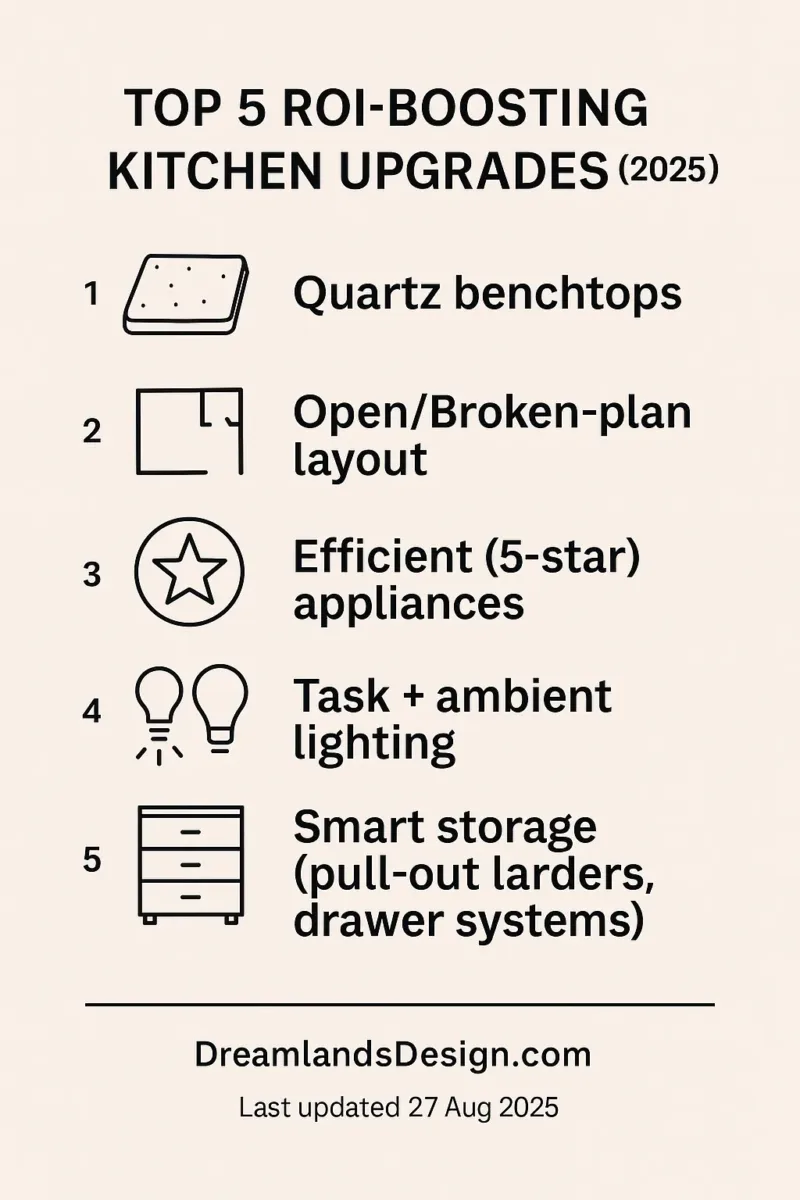
Trend 5: Lighting Layers
Lighting is one of the most underestimated renovation decisions. Poorly lit kitchens are instantly off-putting.
- Task + Ambient: Recessed LEDs for general brightness, pendants over the island for style, under-cabinet strips for food prep.
- Statement Pieces: Oversized pendants or a small chandelier can lift the whole room.
A homeowner in Perth admitted she underestimated lighting. “Once the under-cabinet LEDs went in, I thought: why didn’t I do this years ago? Chopping veggies at night is no longer a shadowy guessing game.”
Trend 6: Open-Plan Isn’t Dead
The shift to open-plan kitchens shows no sign of fading. Australians love flow between cooking, dining, and living. Removing bulkheads and walls not only improves sightlines but also increases the sense of space.
That said, there’s a counter-trend: “broken plan” kitchens. Instead of fully open, some renovators are creating subtle separations with sliding screens or half walls—giving connection when you want it, privacy when you don’t.
Trend 7: Hardware and Backsplashes That Speak
Details matter. Handles and splashbacks are often the “jewellery” of the kitchen.
- Matte Black & Brushed Brass: Both are still in play. Black looks bold, brass feels warm. Tip: black shows fingerprints, brass doesn’t.
- Large-Format Tiles: Marble-look porcelain in oversized slabs means fewer grout lines and an upmarket finish.
- Patterns: Herringbone tiles or Moroccan mosaics inject personality without overwhelming.
Trend 8: Colourful Appliances for the Brave
While stainless steel is still the safe bet, colourful appliances are making a comeback. Retro-style fridges in mint, navy, or blush can be both functional and focal.
Do they add resale value? Maybe not directly. But they create a talking point, and in competitive markets, that emotional connection can tip a buyer over the line.
Trend 9: The Rise of the Multi-Tasking Island
Islands aren’t just benches anymore. In many homes, they’re the central hub for… well, everything.
- Workstations: Outlets for laptops, USB ports for charging.
- Family Dining: Extended seating areas for casual meals.
- Hidden Storage: Drawers for cookbooks, cupboards for bulky appliances.
- Entertainment Zones: Wine fridges, even integrated beer taps in high-end builds.
Expect to spend anywhere from $8,000 to $20,000+ for a custom island, depending on features and materials.
How Much Value Does a Kitchen Reno Add in Australia?
Numbers vary, but here’s a guide based on market reports and Housing Industry Association (HIA) data:
- Minor Remodel (benchtops, fixtures, lighting): 70–80% ROI
- Major Remodel (new layout, cabinetry, appliances): 50–65% ROI
- Luxury Overhaul (custom joinery, high-end imports): ROI varies—these are lifestyle-driven, not resale-focused
Remember, overcapitalisation is real. Spending $150k on a luxury kitchen in a suburb where the median house price is $600k rarely stacks up.
Mistakes to Avoid
Even with the best intentions, renovators often stumble.
- Going Too Trendy: Neon cabinetry or ultra-specific tile patterns can date quickly.
- Skimping on Storage: Looks fade; function lasts.
- DIY Overreach: A poorly laid tile job or uneven benchtop screams “cut corners.”
- Forgetting Resale: Love purple? That’s fine, but future buyers may not.
Real-Life Case Studies
- Melbourne Couple: Spent $35k updating cabinetry, benchtops, and lighting. House sold for $120k above suburb median. Agent said: “The kitchen closed the deal.”
- Brisbane Family: Spent $18k on an open-plan conversion, adding an island with seating. They stayed, but their valuation jumped by nearly $90k.
- Perth Investor: Budgeted $12k for a cosmetic spruce-up—painted cabinets, new handles, LED lighting. Rented within two weeks at 20% higher rent.
FAQs: Kitchen Renovation 2025
Quartz benchtops, functional storage, and open-plan layouts consistently top the list.
Aim for 5–10% of your property’s value. Overspending risks overcapitalisation.
Yes, though “broken plan” options are emerging for people who want flexibility.
Sage green, dusty blue, clay tones—muted, earthy colours that balance personality with broad appeal.
4–8 weeks for a moderate remodel, 3–6 months for a custom overhaul.
Absolutely. Buyers now ask about appliance ratings and cabinet materials. Eco-friendliness is a selling point.
Bringing It All Together
A kitchen renovation isn’t just about chasing trends—it’s about creating a space that works for you while boosting your home’s future value. Durable quartz benchtops, clever storage, layered lighting, and sustainable choices tick both boxes: they improve your daily life and make your property more attractive to buyers.
If you’re feeling unsure about where to start, working with professionals is worth considering. Companies like GIA Renovations specialise in designing kitchens that combine timeless design with modern practicality. Their insight can save you from costly mistakes and help ensure your investment delivers maximum return.
Because at the end of the day, the kitchen isn’t just another room—it’s where life happens. And when it’s designed right, it’s the space that sells the home.
Last updated: 27 August 2025


